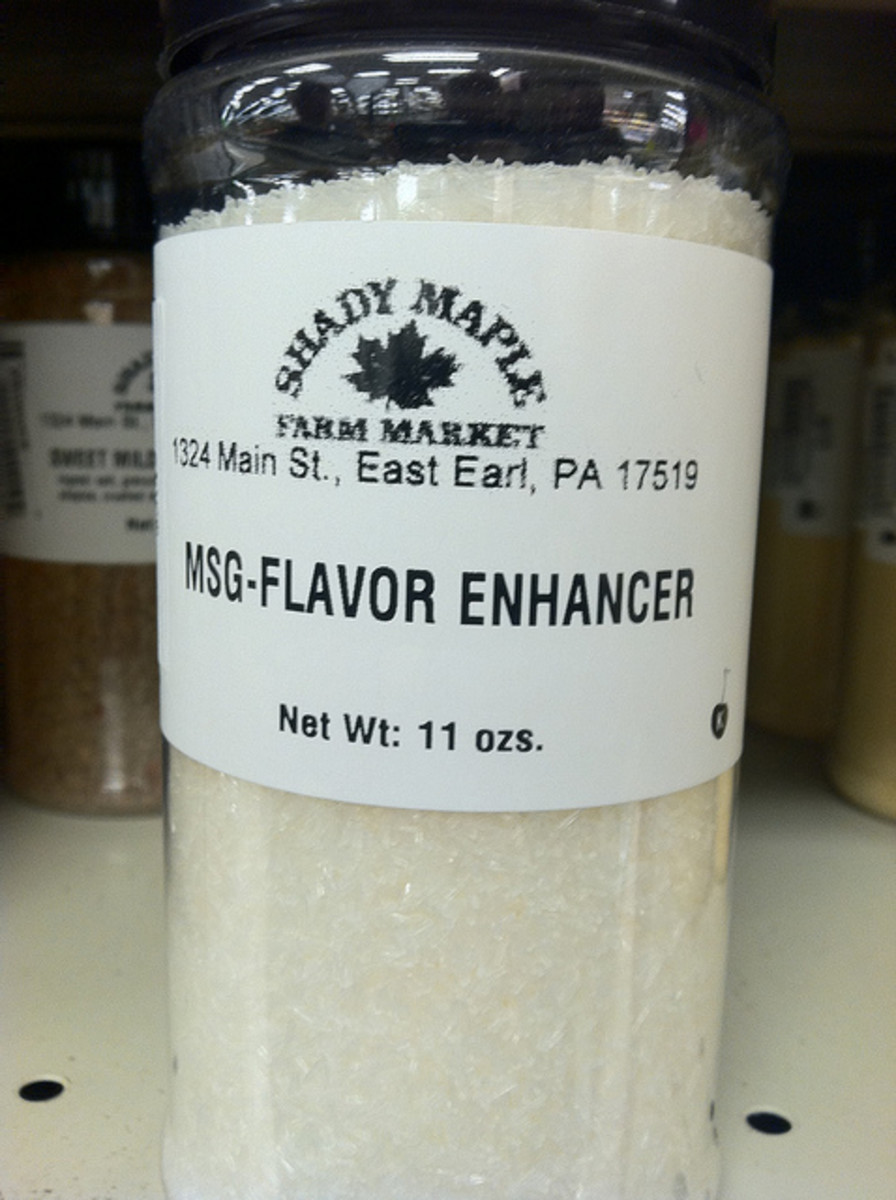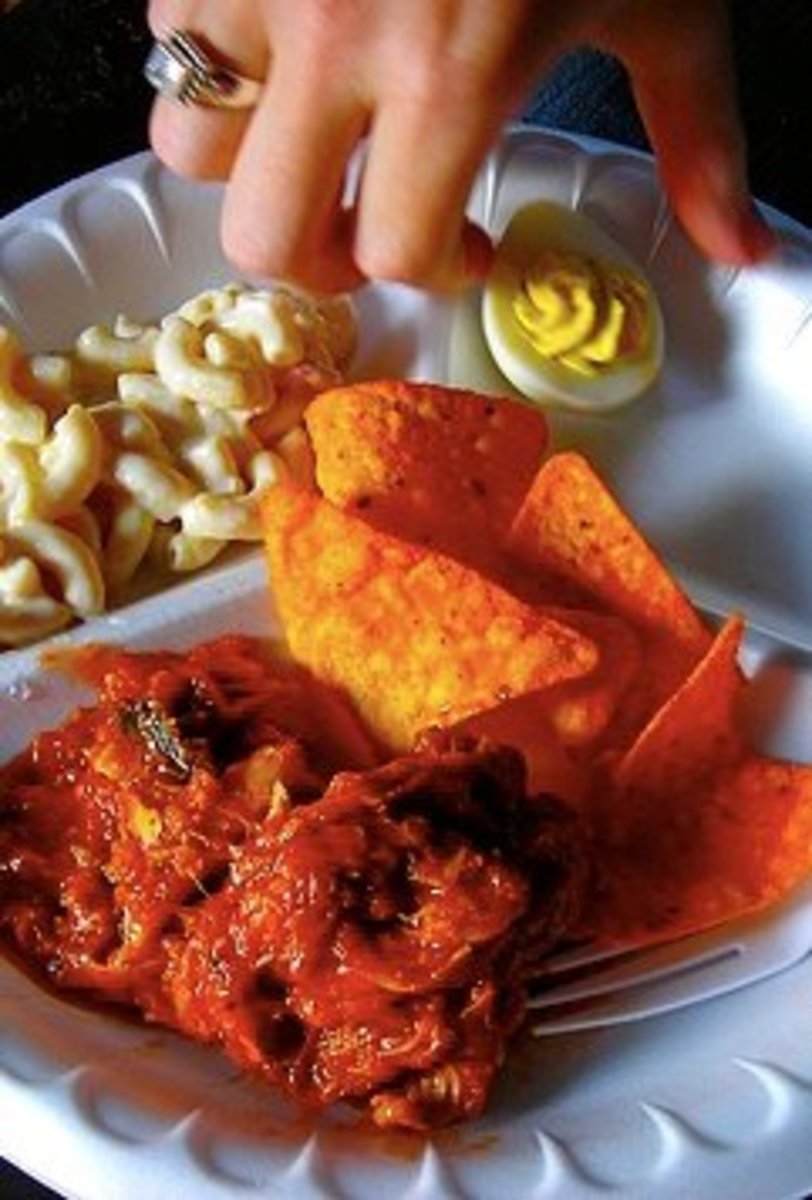10 Most Dangerous Food Additives Explained
The use of additives in food is nothing new. It’s a cost saving measure that’s been done through the ages from Roman times to present times. Only back then, instead of food additives, they were called food adulterants.
In England during the Victorian era, bakers would use a mix of flour, sawdust, chalk and alum to save money and make a hefty profit. It was usually pretty flavorless, but people put up with it because its white color, in contrast to the darker, wholesome breads, gave it a more refined look. "Whole grain brown bread? Do I look like the common rabble that litter the streets? If it's not refined than it's not fit for my consumption. Now go draw my milk bath"
Elizabeth only eats the good stuff
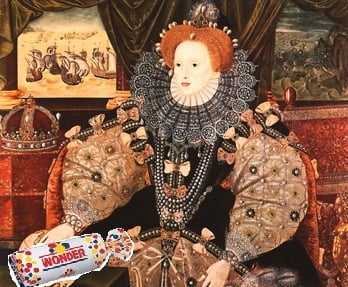
IT REALLY IS A CLASSIC!
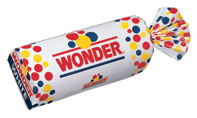
By the way, alum and chalk are still allowed in our food supply. You'll commonly find alum in Heinz Sweet Relish, among other brand name pickles and fast food burgers.
Don't bother looking for chalk in the ingredient listing, when used in food it's called magnesium carbonate or calcium carbonate and yes, it is used in Wonder Bread.
The problem with the adulteration of food... I mean, the problem with food additives is that they are used to fool our senses into thinking that we are consuming foods with nutritional value. That's the price that is paid with these highly processed, artificially delicious foods. The essential nutrients these "foods" lack are replaced with dangerous additives cooked up in a lab somewhere.
PROCESSED, MECHANICALLY SEPARATED CHICKEN. SOON TO BE CHICKEN NUGGETS.
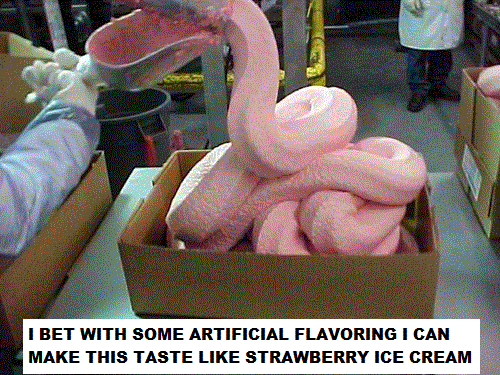
Additives are used due to:
-Lack of flavor:
Processed foods lose their flavor, hence the need for artificial flavors.
-Lack of color:
Due to high levels of processing, foods tend to lose their color. They usually end up looking gray (a case with processed meats) or some other uniform, unnatural color.
-Poor texture:
Processed foods usually have a uniform, boring
texture. So bulking agents must be added.
-To prevent spoilage, oxidation, and mold:
To increase the mass and weight of processed foods at little cost, water is often added. With more water comes the greater risk of spoilage and oxidation. Hence the need for preservatives.
Without further ado, I present you with the 10 most dangerous food additives.
1. Artificial flavors:
A synthetic mixture not found in nature, designed to mimic a natural flavor. May contain MSG. Over 1,700 artificial flavors are approved by the FDA.
Health effects: Unknown. Companies are not required to identify the various synthetic mixtures (1,700 to date) used in foods, requiring only that they be listed under the umbrella of the “artificial flavors” listing. Some individuals are sensitive to artificial flavors, experiencing headaches, nausea, and drowsiness, among other symptoms.
Artificial flavors sample list: benzyl isobutyrate, ethyl acetate, ethyl methylphenylglycidate (petroleum derivative), methyl benzoate (petroleum derivative), hydroxyphenyl-2-butanone. An artificial flavor may be made up of any number of synthetic chemicals.
Used in: Soda, candy, Folgers Hazelnut Ground Coffee, Baker's White Chocolate Chunks For Baking, Hunt's Snack Pack Pudding, Aunt Jemima Syrup, Trident Gum, Cocoa Pebbles Cereal, Baskin Robbins, and just about any other processed food.
2. Modified starch:
A thickening agent. Starch that has been chemically altered for specific food applications. May be genetically modified.
Chemicals used for modification include, but are not limited to:
propylene oxide - a petroleum derivative
hydrochloric acid - a corrosive used to remove rust
succinic anhydride - used in paper production to strengthen paper
potassium hydroxide - used to make alkaline batteries
sodium hydroxide - chemical base used to make detergents, paper, and drain cleaners
Health effects: Since commonly used in baby foods, safety concerns have arisen due to the use of various chemicals in the making of modified food starch. Especially since babies are still developing and have little resistance to such chemicals. More testing required.
Used In: Gerber baby food, Sunny Delight, powdered drink mixes, Gatorade, Powerade, fruit juices, soda, bread, condiments, baby food and baby formula.
3. Artificial Colors:
For a more detailed article on artificial colors and their health effects check out the link below.
The 9 artificial colors approved for use in food by the FDA are:
-Citrus Red no.2 (not widely used)
-Orange B (not widely used)
FD&C Blue No. 1 - FD&C Blue No. 2 - FD&C Green No. 3 - FD&C Red No. 3 - FD&C Red No. 40 - FD&C Yellow No. 5 - FD&C Yellow No. 6
Health effects: Every single one of these artificial colors are synthetically derived from coal tar. Every single one of these food colorings is a carcinogen.
If that's not bad enough, these colors also may cause asthma, hyperactivity, hives, malignant tumors, learning difficulties, lower IQ's in children, and lead to heart, liver, thyroid, stomach and reproduction difficulties.
Used in; Breakfast cereals, yogurt, soft drinks, candy, Gatorade. Basically used in just about all processed foods.
What Is Coal Tar?

4. Partially Hydrogenated oil (Trans fat):
Polyunsaturated vegetable oil that has been partially converted to saturated oil in order to create a solid or semi-solid substance. Use is banned in restaurants across the USA.
Health effects: Linked to Alzheimer’s disease, colon cancer, coronary heart disease, diabetes, high blood pressure, obesity, liver dysfunction, and infertility in women.
Used in: Found in all types of processed foods.
5. BHA:
Petroleum derived preservative, antioxidant, and stabilizer. Banned in Japan and other countries.
Health effects: Carcinogen and neurotoxin. May cause hives, hay fever, wheezing, fatique, asthma as well as affect kidneys, thyroid, liver, stomach and reproduction. A hormone disruptor.
Used in: A large variety of processed foods.
6. Potassium Benzoate:
A preservative. Potassium salt of benzoic acid. Benzoic acid is synthesized commercially from toluene. Toluene is produced in the gasoline making process and the making of coke (carbon fuel produced by distillation of coal) from coal. Therefore, potassium benzoate is a petroleum or coal tar derivative.
Health effects: Asthma, hives, eczema. Caution advised if aspirin sensitive.
Benzene, a known cancer-causing agent, can form in soft drinks when sodium benzoate and ascorbic acid (vitamin c) are mixed.
Used In: Mainly in soft drinks and juices.
7. TBHQ:
An antioxidant used to prevent rancidity in oils and fats. Made from coal tar and butane (petroleum derivative). Usually used in conjunction with preservatives BHT and BHA. Banned in some countries.
Health effects: A carcinogen and neurotoxin. May cause liver, skin, gastrointestinal, reproductive, and cardiovascular damage. Can also cause birth defects, nausea, and delirium. 5 grams are considered fatal.
Used in: Butter, bread, pasta, margarine, condiments, ice cream, potato chips, popcorn, fast food (KFC and McDonald's) and sauces.
8. Potassium Bromate:
A dough conditioner and bleaching agent. In 1993 the World Health Organization (WHO) recommended its removal from all foods. Banned in many countries but still used in the USA
Health effects: A carcinogen and mutagen. Lead to kidney, stomach, and thyroid tumors in animal tests.
Used in: Bread, white flour, fast food buns such as Burger King, Wendy's, and Arby's
.
9. Propyl Gallate:
An antioxidant preservative made from gallic acid and propyl alcohol. Commonly used with BHT and BHA.
Health effects: In short term studies 40 percent of rats died within the first month. Surviving animals exhibited retarded growth and renal damage at time of death. Animal tests show that this additive may be a carcinogen.
Used in: Meat, oil, butter, baked goods, breakfast cereals, ice cream, gum, chicken soup, beverages.
10. Sodium Nitrate/Nitrite
Flavoring agent, food coloring and preservative for processed meats.Prevents the growth of the bacteria clostridium botulinium, the cause of botulism.
Health effects: A carcinogen and neurotoxin. Once heated up, either cooked or in the gastrointestinal tract, sodium nitrates/nitrites can form cancer causing agents called N-nitrosamines. Nitrites can cross the placenta, so should be avoided by women and children. Meats with nitrites may cause lug disease.Can also cause headaches, dizziness, vomiting, migraines, cardiovascular and respiratory problems.
Animal testing caused cancer in the liver and lungs.
Used in: Canned, cured, and processed meats. Bacon, potted meat, frankfurters, smoke cured tuna, salmon and shad.
RELATED HUBS
- What's In My Food?: Coca-Cola Ingredients Explained
- Artificial Colors In Food: Is FDA Certification Enough?
This guide focuses on the 9 FDA certified artificial food colorings approved for use in food. Artificial food colors may be used in food only after FDA approval and certification. They are known most commonly...

